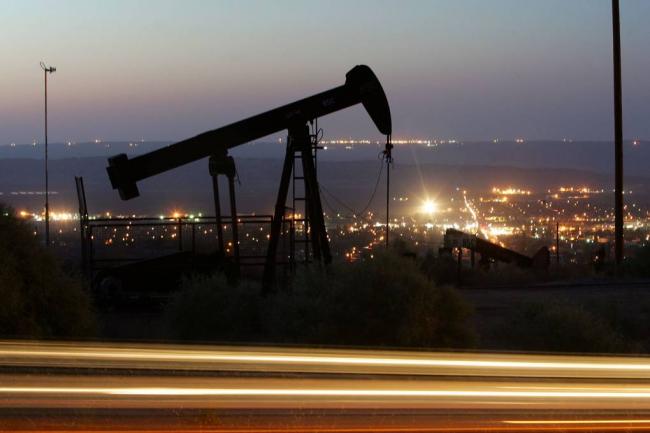Articles Menu

June 28, 2021
A new analysis from an environmental advocacy group highlights a dirty secret about California-produced oil: It is responsible for higher carbon emissions than the oil the state imports.
Scientists with the Center for Biological Diversity examined the carbon intensity of the crude oil supplied to California refineries and released their analysis on Monday, which shows that producing gasoline from heavy crude oil drilled in places like Kern County takes a lot of energy and creates tons of pollution.
They found that the carbon intensity of oil produced in California has climbed by 22% since 2012.
“California’s oil is getting dirtier and heavier, heating the planet more and requiring more polluting methods to extract it,” said John Fleming, the report’s lead author, in a statement. “The idea that California oil is somehow cleaner or climate-friendly is ludicrous.”
The report tracks with similar statistics released by California regulators.
Dave Clegern, a spokesperson for the California Air Resources Board, said agency staff haven’t yet read the environmentalists' report.
But he said California and its regulators are working to drive down consumer demand for gasoline with its policies, like incentivizing the use of electric vehicles. Gov. Gavin Newsom announced last September that California will ban the sale of new gasoline-powered cars by the year 2035.
“We know that as you get to the bottom of the barrel, more and more unconventional fuels, from light sweet crude to heavy crude — which California produces a lot off — to tar sands, it takes more effort to make gasoline,” said Dan Kammen, an energy professor at UC Berkeley who helped the state craft its fuel standard more than a decade ago.
“More effort means more energy. It means more pollution. It also typically means removing more impurities, all of that adds up to a dirtier and dirtier product,” he said. “This report really calls that out. California produces in Kern County some very sour, high-toxics fuels. It is not a surprise.”
Kammen was not involved in the center's report, but he helped design the methodology behind California's Low Carbon Fuel Standard. The environmentalists used equations from that state regulation in their report.
Proponents of California oil drilling have argued that California-produced oil products are cleaner than the imported alternatives. These statistics undercut that argument — at least, in part.
While the production of California oil could contribute more planet-warming gas emissions, industry groups and labor groups have argued that California oil is preferable to imported alternatives because it is produced under strict environmental and labor regulations. Limiting drilling here could hurt jobs, they say.
“Foreign oil is not produced with the same environmental protections or humanitarian values that we have here in California; nor do they pay billions in California taxes or hundreds of millions of dollars in fees that are reinvested to advance California’s climate goals,” Rock Zierman, CEO of the California Independent Petroleum Association, told the Los Angeles Times.
The environmentalists are using the report to call on California to swiftly stop approving new oil and gas wells, ban fracking and “immediately implement a health-and-safety buffer to prevent oil and gas drilling in communities and protect public health and safety from the air pollution and other harms of oil and gas extraction,” they wrote.
Regulators with the California Geologic Energy Management Division, known as CalGEM, have delayed, for the second time, the release of draft rules that could require oil and gas drilling sites be set back from homes and schools in the state.
[Top photo: An oil rig extracts crude on July 21, 2008 near Taft, California, in Kern County. (David McNew/Getty Images))]